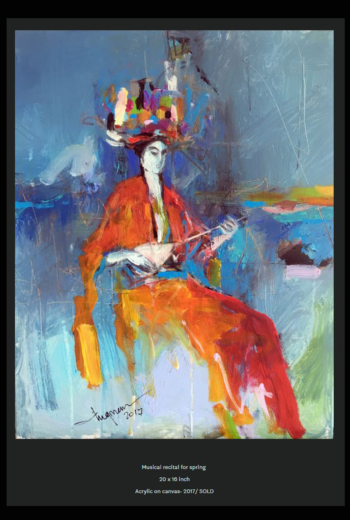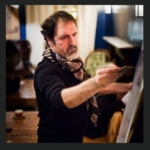Izedinê Heremşedad
Biography Of Lukman Ahmad
Through expressionism and imagination, Lukman presents the spectrum of a human experience, and invites the viewer to know another culture. From a brush, music, dance, laughter, suffering, compassion, and passion, incite the viewer’s eye to experience from a story of a people – a people forgotten and without a nation, yet a people that has retained a rich and full culture.
Syrian born, Lukman reflects the Kurdish experience as well as the human experience. Self-educated, and deeply in touch with his people and with the intertwined surrounding cultures, he expresses imagination and experiences with authenticity, allowing color and movement to tell the story, be it one of pain or of happiness, of contemplation or passion. He combines symbolism and imagination, color and rhythm, to transport the viewer into the world he lived and the emotions he witnessed.
With over 45 exhibits in various countries, including Syria, Turkey, Iraqi Kurdistan, Switzerland, Lebanon and the United states, he strives to deliver that spectrum of life. Galleries and exhibits have ranged from solo exhibits such as in Washington, D.C. with the Foundary Gallery (2012), the Voice of America building (2015), and the Jerusalem Fund Gallery (2013); and group exhibits such as the West Branch Gallery and Sculpture Park in Stowe, Vermont (2016), Artomatic in Maryland (2012, 2015, and 2016), the Ackland Art Museum with the University of North Carolina (2011), and the workhouse Art Center in Virginia (2014), The Jerusalem gallery, Washington DC (2013-2019) and Artfactory, VA (2022)
Lukman’s work is art with purpose. With each exhibit, he maintains sight of art’s value and its role in the human experience. His work reflects that value as a path to understanding oneself and one’s environment, and as a method to show the Kurdish experience and to remove conflict and suffering. Purpose, value, and vision, through symbolism, expressionism, and color.
Throughhis experience, which began to change after the outbreak of the civil war inSyria, especially in the struggle against terrorism in his Kurdish region inthe northeast of Syria, he is trying to highlight the human rights violationsduring the wars. Along with his colorful paintings and expressive emotion, theblack color also offers the tragedy of death and hope together in his currentpaintings.
Hisexperience depends not only on the aesthetic aspect, but also on its culturaldimension and how to use cultural and cognitive tools to make art a positiveapproach to a civil culture based on human values of respect and acceptanceof the other in addition to the aesthetic sophistication of the artistic work.
He is working with VOA since 2014 –Kurdish service

